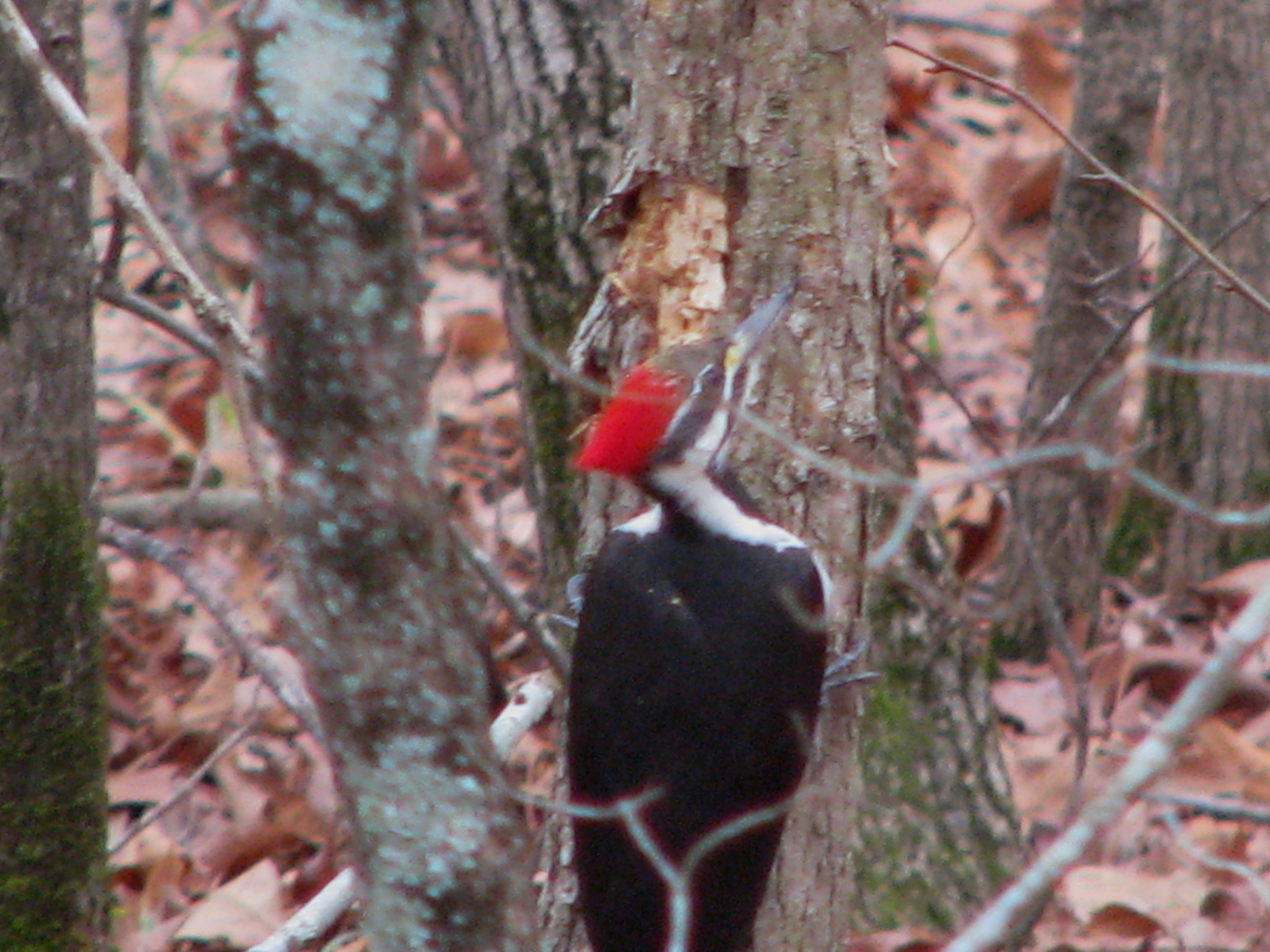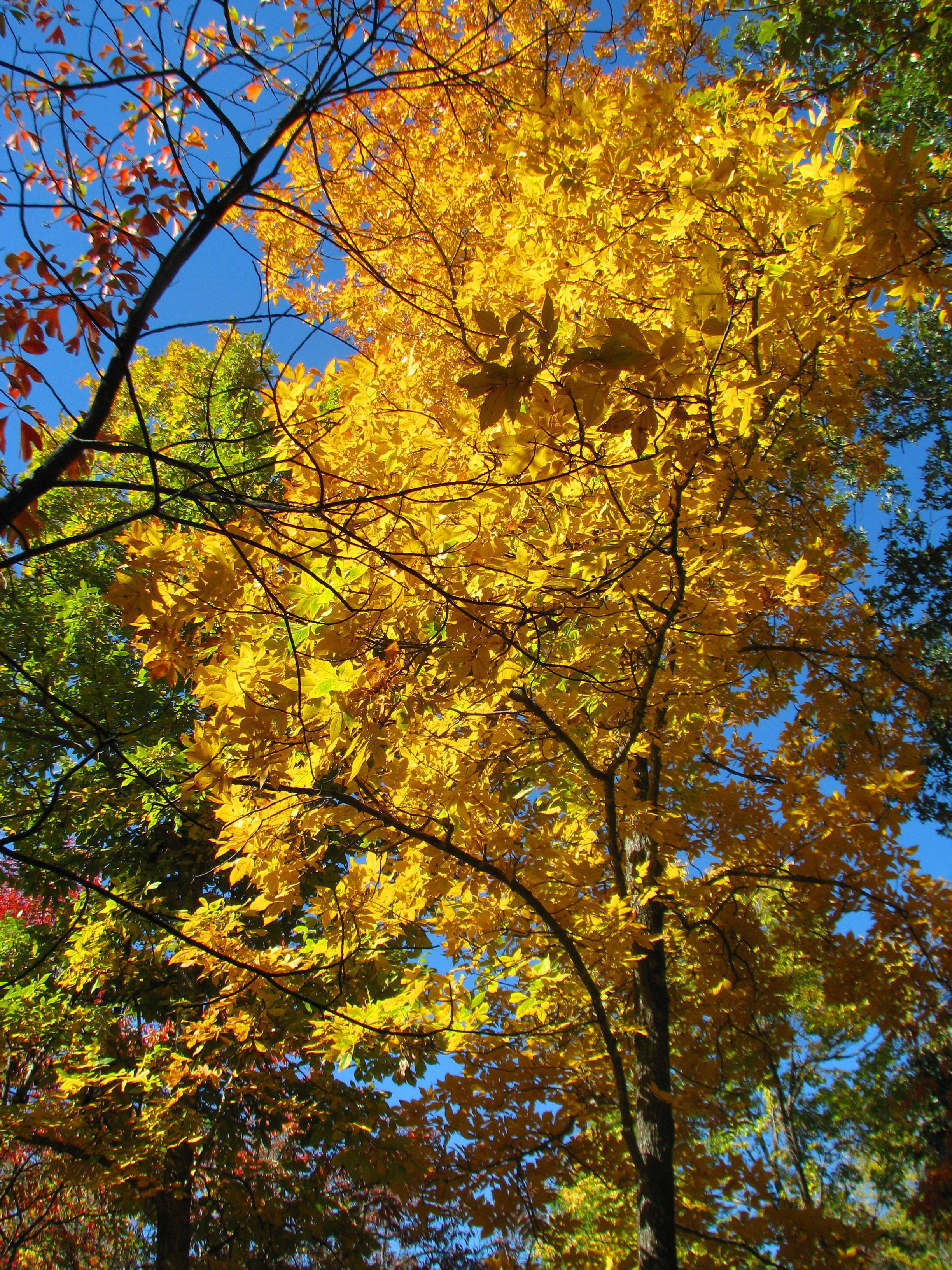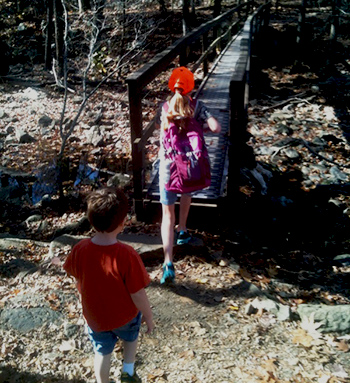Managing Hardwoods in Arkansas
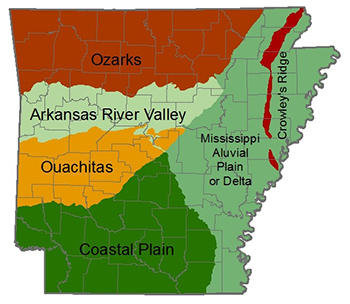
Arkansas contains six natural divisions:
- Ozarks
- Ouachitas
- Arkansas River Valley
- Coastal Plain
- Mississippi Alluvial Valley or Delta
- Crowley's Ridge (The Natural Divisions of Arkansas, by the Arkansas Heritage Commission).
Within and between these natural divisions exists a large and amazingly diverse hardwood forest resource.
Almost three quarters of Arkansas' total forest resource is comprised of hardwood forest types. These forest types include both bottomland and upland hardwood forests.
The bottomland forests are located in the Delta, Arkansas River Valley, and minor stream bottoms within other natural divisions. The upland hardwood forests are primarily located across the Ozark and Ouachita Divisions, with pure hardwood and mixed pine/hardwood forests occurring in the Coastal Plain division.
A final, unique upland forest exists in the Crowley's Ridge natural division. Crowley's Ridge is a small but interesting geographical area located in the Delta but exhibiting elevations up to 200 feet higher than the Delta division and containing hardwood tree species not native anywhere else in the state.
Arkansas' hardwood forests have historically been composed of oaks, along with hickories, maples, ashes and other tree species and have provided a resource that has been important to humans and wildlife for multiple uses.
Hardwood forests are especially important in their ability to meet multiple objectives for management, including:
- Timber
- Wildlife
- Recreation
- Environmental quality
- Aesthetics
|
Photo by Kyle Cunningham, University of Arkansas System Division of Agriculture. |
Photo by Kyle Cunningham, University of Arkansas System Division of Agriculture. |
|
Photo by Kyle Cunningham, University of Arkansas System Division of Agriculture. |
Photo by Kyle Cunningham, University of Arkansas System Division of Agriculture. |
The oak forests are aging across the state. A result of these "aging" forests can be a decline in the health, vigor, and value of the resource. Additionally, previous management (or lack of management) and reduced role of fire has resulted in a need for management operations that will help restore the now shrinking oak component present in many hardwood stands in both bottomland and upland forests.
Managing hardwood forests with an emphasis on the presence of oak species can be a challenge. Management operations to maintain healthy hardwood forests with oak as a component of existing stands include:
-
- Prescribed fire
- Cool season fires and proper timing are critical.
- Herbicide applications
- Herbicides can help control competing unacceptable species for management.
- Thinnings
- Retaining healthy overstory oak trees with large crowns through the end of a rotation.
- Partial thinnings should not remove all the healthy, higher value trees (termed "high grading").
- Regeneration harvests
- Regeneration harvests are designed to remove the merchantable trees present and establish new seedlings for the future.
- Prescribed fire
Keys to success in managing existing stands:
-
- Maintain more "open" stands that allow sunlight to penetrate to the ground.
- Reduce number of small-size non-oak competitors
- Maintain well spaced, large crowned, healthy overstory trees to provide seed crops for future forests.
- Perform seedling counts to ensure large oak seedlings are present to replace forest stands scheduled for a regeneration harvest.
- Schedule final harvest or harvests based on the seedling count evaluations. If large oak seedlings are not present before a final harvest is conducted, the regenerated forest may not adequately meet management goals for timber, wildlife, and other objectives.
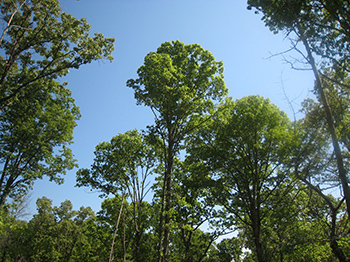 Partial harvests that leave large trees with large crowns help provide acorns and proper sunlight for oak seedling establishment. Photo by Kyle Cunningham, University of Arkansas System Division of Agriculture. |
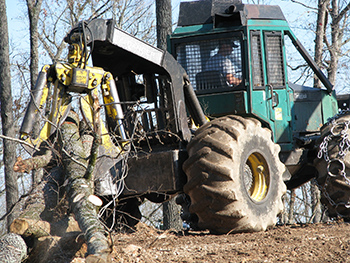 Removing small, low value pulpwood trees to favor larger, higher value trees should be the focus of thinnings.
|
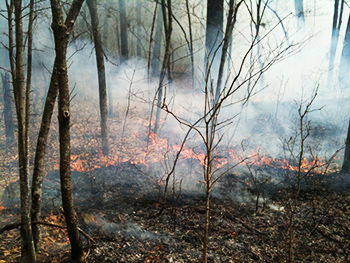 Prescribed burning can be a valuable management tool in hardwoods, when properly employed. Photo by Kyle Cunningham, University of Arkansas System Division of Agriculture |
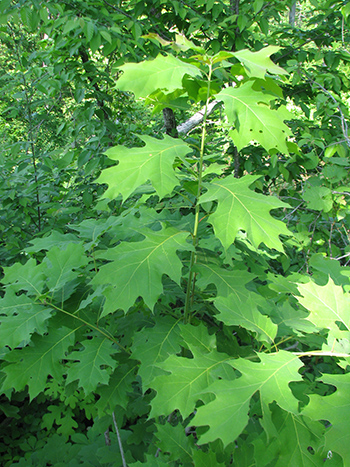 Establishing large oak reproduction is essential in managing for a future stand of oaks. Photo by Kyle Cunningham, University of Arkansas System Division of Agriculture |
When managed properly, hardwood stands can be an outstanding resource to meet multiple management objectives. However, decision-making can be difficult for hardwood forests. Pursuing the advice of a professional forester (with hardwood management experience) can be a very smart choice that will help ensure a forest legacy is maintained for future generations.
Fact Sheets for Management of Existing Stands:
Evaluating the Management Potential of Upland Hardwood Stands
Using Natural Regeneration to Promote Oaks in Upland Hardwoods
A Landowner's Guide to Field Grading Hardwood Trees
Thousands of acres are planted each year with hardwood seedlings. These plantings most often occur on abandoned agricultural fields or "old fields". There are several federal cost share programs (administered by the USDA Natural Resource Conservation Service and the Farm Service Agency) that promote these plantings on marginally productive agricultural fields. These programs include:
-
- Conservation Reserve Program (CRP)
- Wetland Reserve Easement (WRE, formerly the WRP)
- Environmental Quality Incentive Program (EQIP)
- Wildlife Habitat Improvement Program (WHIP)
There are many considerations when planning to plant seedlings (termed: artificial regeneration), including:
-
- What are the objectives for the new forest stand?
- What do values I want to get from the new forest?
- What tree species will help achieve these objectives?
- What tree species will grow well on the site?
- What type of work will be necessary to prepare an area for planting?
-
- Soils
- Competing vegetation
- What type of seedlings should I purchase?
- Size
- Bare root, containerized, etc...
- Where should I purchase seedlings?
- Public or private nurseries
- What post planting operations will be necessary to ensure survival of the planted seedlings?
Proper planning prior to purchasing and planting hardwood seedlings can make the difference between successful survival and growth rates and planting failures (which are costly). The first two years (primarily year 1) of a hardwood planting will dictate whether it is successful in the years to come. Getting help from a professional forester is almost always a good idea to ensure success when planting hardwood seedlings.
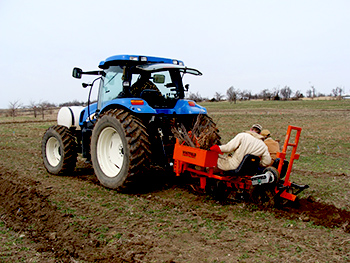 Machine planting hardwoods on an old field. Photo by Kyle Cunningham, U of A System Division of Agriculture.
|
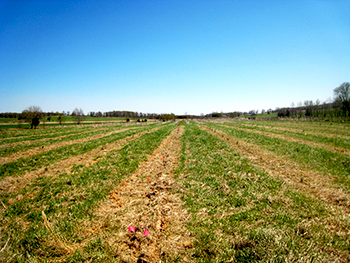 Site preparation is essential prior to planting hardwood seedlings.
|
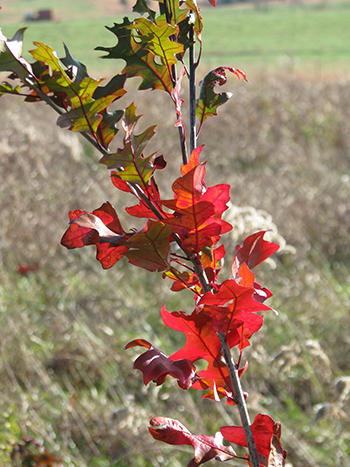 Oak seedling after a growing season. Photo by Kyle Cunningham, U of A System Division of Agriculture. |
|
USDA NRCS Wetland Reserve Easement (WRE) Afforested Hardwood Fields
The Natural Resources Conservation Service (NRCS) provides opportunities for cost-share and technical assistance based conservation easements through their Agricultural Conservation Easement Program Specifically the Wetland Reserve Easement (WRE) program (formerly the WRP program) has provided easements on agricultural fields in wetland areas for over 25 years.
There are currently thousands of acres in Arkansas that have been established in hardwoods over the past 25 years under the WRP/WRE programs. The NRCS provides technical assistance for hydrological operations and hardwood establishment through the first few years of the program.
Many of these stands have developed to a point where re-entry is warranted into the developing stands to assist in meeting the programs overarching goal of wildlife habitat and restoration of wetland systems. Forestry and wildlife researchers and professionals have worked on the development of stand management guidelines as the planted stands age. These operations may include pre-commercial or commercial thinning.
Why conduct a thinning for wildlife habitat?
As planted hardwood stands develop, the tree canopies begin to touch and close the space available for sunlight to penetrate through the canopy. Sunlight levels beneath these canopies can be reduced to under 10 percent of full sunlight. Adequate sunlight is essential to establish and grow beneficial plants at ground level for cover and food for many wetland wildlife species. Removing a targeted portion of the developed trees allows additional sunlight to once again reach the ground level and promote herbaceous plants and shrubs.
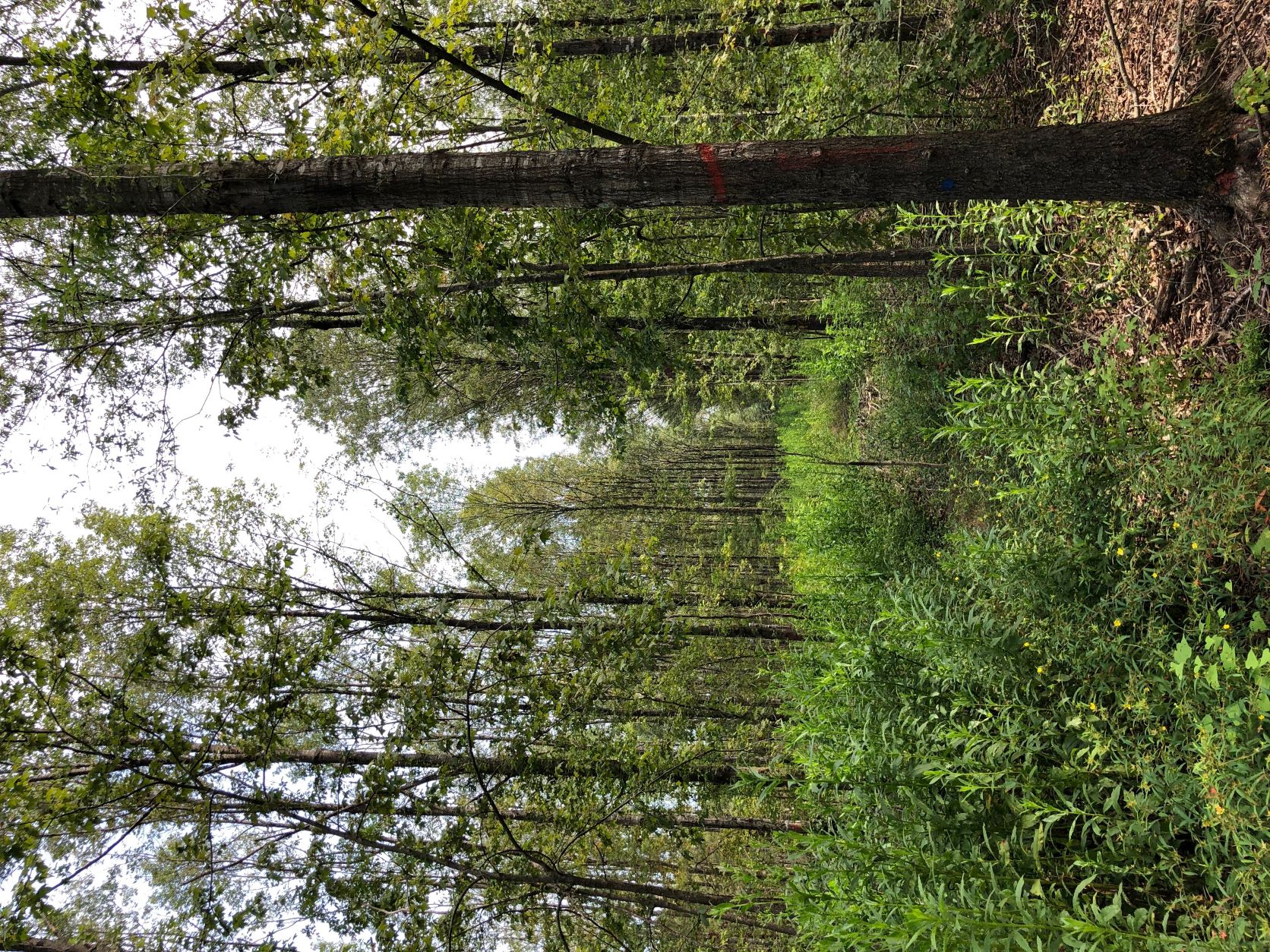
When to conduct a thinning for wildlife habitat
Deciding when to conduct a thinning can be impacted by a several factors:
- Stand density -
- Very dense stands will result in canopy closure sooner and experience reduced ground level vegetation available. These stands will be in more immediate need of thinning to restore the ground level sunlight environment. For example: a 25 year old stand with 350 trees per acre.
- Less dense stands may provide wildlife benefits for longer periods of time without intermediate treatments such as thinning. For example: a 25 year stand with 180 trees per acre.
- Tree size -
- Tree size will determine whether the stand is pre-commercial (yet to reach commercial value) or commercial size. Hardwood plantations become operationally commercial when the average tree diameter is 8 inches. One can see in the figure below that a planted stand with an average diameter of 8 inches will have trees ranging from small to large in size, even though they were planted at the same time.
- Pre-commercial stands will require a cost to conduct
- Commercial stands may provide a revenue stream
- Presence of problematic tree species -
-
- During establishment some stands may experience an influx of non-native invasive species. These species may include: privet, tallow, mimosa and others. Targeted removal of invasive tree species will improve overall stand health. (See individual plant treatment in UACES MP553.
- Ash species -
- Some stands were planted with components of ash trees (Fraxinus spp.) that are currently under risk from the emerald ash borer. Targeted removal of these stems may be beneficial to overall stand health.
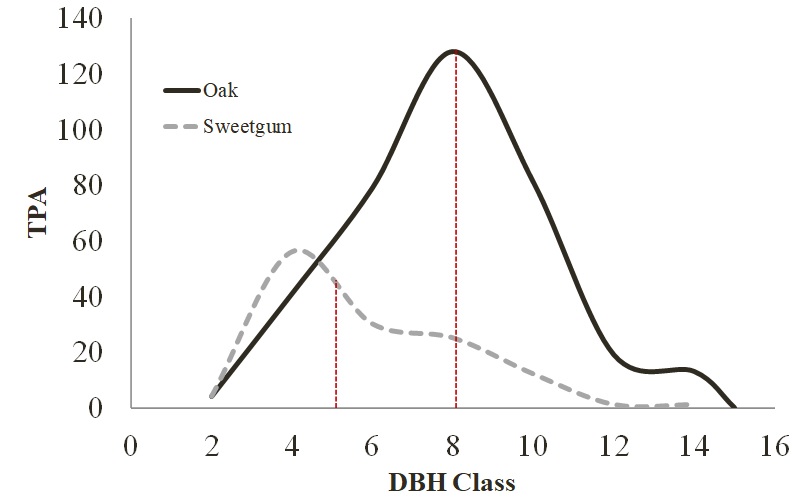
How to thin a hardwood plantation for wildlife habitat
- Row thinning -
- Removing a targeted number of rows in a planted stand. For example: removing every third row through a stand.
- Selective thinning -
- Removing specific trees within the stand based on a set of criteria. For example: removing trees with inferior crowns for the tree size.
- Note: commercial thinnings often strive to incorporate both row and selective thinning in the first thinning operation.
- Group thinning -
- Thinning designed to open small canopy gaps through a stand.
- Pre-commercial thinning -
- Pre-commercial thinning will involve removal of targeted stems through operations like mechanical mulching and shearing, or using ground crews to mechanically fell trees.
What should a hardwood stand managed specifically for wildlife habitat look like?
- Planted hardwood stands like those enrolled in the WRP/WRE program should exhibit
certain characteristics. Depending on the target wildlife species to be emphasized,
some criteria may become more or less significant. For example, if managing for neotropical
migratory birds, stand structure and soft mast production become important elements.
Desired stand characteristics may include:
- Lower density, open canopy stands compared to traditional "fully stocked" stands
- Presence of snags (small number of dead stems standing or on ground)
- Developing complex stand structure (vertical and horizontal)
- Mast producers
- Both hard (e.g. acorns) and soft (e.g. persimmon) mast
- Reproduction - employing non-traditional harvest practices (like some designed to enhance wildlife habitat) may increase the need to establish desirable tree species (such as red oaks) earlier during stand development
- A more detailed description for DFCs for Wildlife in hardwood forests can be found at: Lower Mississippi Valley Joint Venture
The Arkansas Agricultural Experiment Station has several research forests located around the state. Research and Extension faculty work to develop demonstration areas for forest landowner education. There is a diversity of hardwood project areas, including:
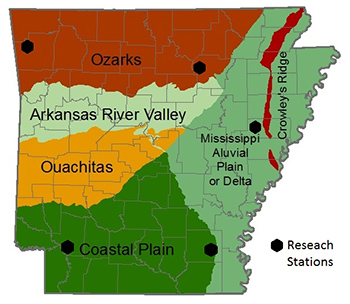
-
- Hardwood natural regeneration
- Hardwood artificial regeneration
- Thinning operations
- Prescribed fire as a management method
- Herbicide usage in hardwood management
- Oak ecosystem restoration
-
Managing hardwood forests for wildlife
Workshops, field tours, and other trainings are conducted annually at research stations across the state. Forest landowners are encouraged to attend these very informative, hands on educational programs (see calendar of events or check with your county Extension agent). County Offices
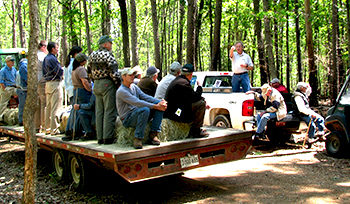
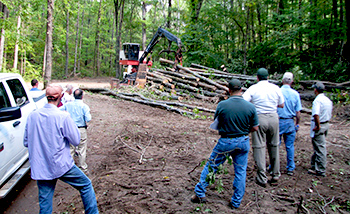
Research and Extension Stations
Publications
- FSA 5010 Using Natural Regeneration to Promote Oaks in Upland Hardwood Stands
University of Arkansas - Division of Agriculture.
- FSA 5012 Evaluating the Management Potential of Upland Hardwood Stands
University of Arkansas - Division of Agriculture.
- FSA 5015 Forest Landowner's Guide to Field Grading Hardwood Trees
University of Arkansas - Division of Agriculture
Presentations
Competition Control in Hardwood Stands

